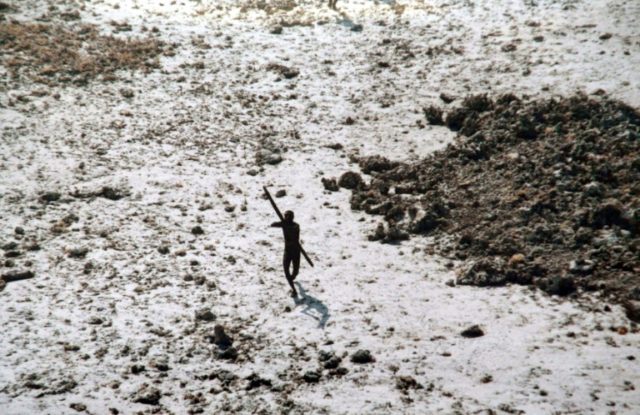Washington (AFP) – John Chau, killed by members of the Sentinelese tribe on an island in the Andaman Sea, is the latest in a long line of American missionaries who voyaged to the world’s most isolated regions to spread Christianity.
The first Christian missionaries set sail from the United States for Asia more than 200 years ago, according to Dr Todd Johnson, director of the Center for the Study of Global Christianity at the Gordon-Conwell Theological Seminary in Massachusetts.
Adoniram Judson and his wife, Ann, left Salem, Massachusetts, in February 1812 for India but eventually ended up in Burma, where Adoniram spent most of the next four decades.
“That’s the beginning and then there were several other mission agencies that grew up after that,” Johnson said.
There were more than 127,000 Americans working abroad as Christian missionaries in 2010, according to the Center for the Study of Global Christianity.
“It’s gone up a little bit since then,” Johnson said, adding that the figure includes “Christian missionaries of all kinds” — Mormons, Jehovah’s Witnesses, Catholics, Protestants and others.
“Historically, Catholics have had quite a large portion of that, but Mormons I think probably have the single largest number of any group,” he said.
The 26-year-old Chau was exceptional in that he appeared to be a “complete lone ranger type of missionary,” Johnson said, not sponsored by a particular church or organization.
Chau received missionary training from a Kansas City, Missouri-based group called All Nations, but his ill-fated voyage to remote North Sentinel island where he was killed appears to have been his own initiative.
On its website, All Nations says its mission “is to make disciples and train leaders to ignite church planting movements among the neglected peoples of the Earth.”
“All Nations aspires to see disciple making movements in every people group of the world so that Jesus may be worshipped by every tongue, tribe and nation,” it says.
– Comparisons to Jim Elliot –
Chau has been compared to Jim Elliot, an American killed in Ecuador in 1956 along with four other missionaries while attempting to evangelize the Huaorani people.
“But Jim Elliot and his four other companions were part of a mission agency, an institutional agency that sent them out,” Johnson said.
“We’re not hearing about any agency behind (Chau),” he said. “We’re hearing about his courage and his drive to go where no one else had gone before and that kind of thing.
“It’s all part of the missionary narrative but it’s unusual in the sense that you’re talking about an individual,” Johnson said.
American Christian missionaries abroad are involved in a wide range of activities aside from proselytizing, including medical missions.
“Catholic missions have sent people to hospitals and schools and that sort of thing,” Johnson said. “That’s really a longstanding mission strategy.”
He said that word proselytizing is “kind of a harsh word.”
“I was reading about John Chau — that he went to convert the Indians — which is kind of strong language,” he said.
“I think what he went to do was to preach, or let them know what the good news was,” he said. “Whether or not they’d be interested is a completely different subject.
“Certainly converting, that’s not a good word in India because there are anti-conversion laws and all of that,” he said.
Johnson said most Christian missionaries “wouldn’t use that language, wouldn’t say ‘I’m going to convert.’ They would say ‘I’m going to introduce people to Christ.’
“They would use language that is more religious freedom language — that everybody has a choice they can make.”
– More diversity –
Johnson said missionary work has been hampered somewhat because fewer countries nowadays are issuing what he called “missionary visas.”
“You could get a visa to go somewhere as a missionary and those are disappearing,” he said.
“India, for example, had missionary visas during the colonial period,” he said. “India received lots of missionaries with that particular visa.
“And now there’s no such thing.”
Johnson said that while most American missionaries abroad are linked to established institutions, there has been a rise in the number of smaller churches engaged in what he called “direct sending.”
“Where, let’s say, an independent charismatic church, maybe 1,000 members in Louisiana, they’re sending missionaries to Siberia,” he said.
“There are many, many people in that category, which is really different than John Chau,” he said. “They do have an institution behind them, but it’s a local church, not a mission agency.”
Johnson said another trend is for there to be fewer white missionaries from the United States.
“It’s more diverse,” he said. “They might be US citizens but they might be originally from Africa, or Latin America or Asia.”

COMMENTS
Please let us know if you're having issues with commenting.